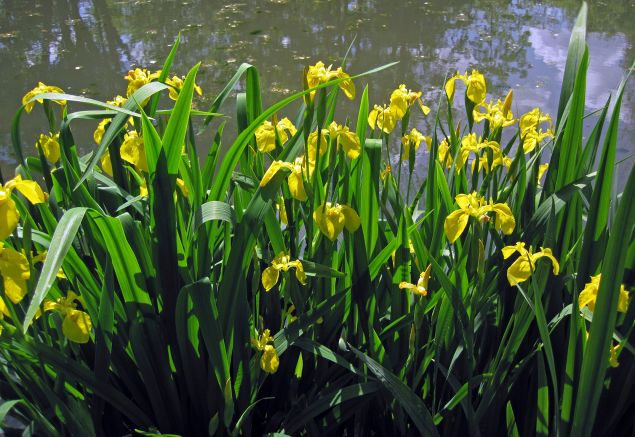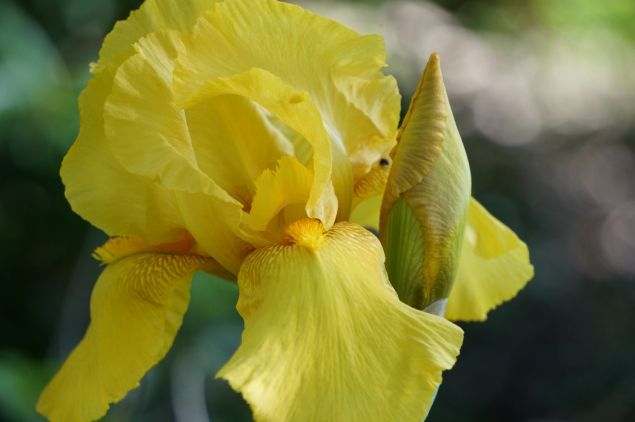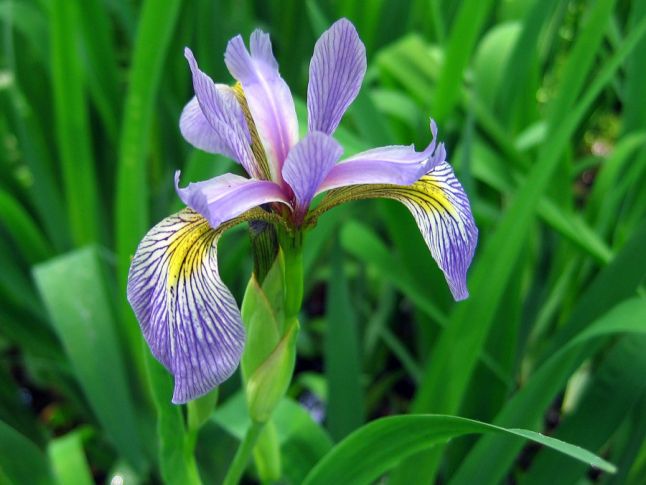Beyond Appearances: Invasive Yellow Iris
Yellow iris looks pretty, but that attractive appearance obscures its reality for our wetlands and waterways. Yellow iris (Iris pseudacorus) acts as invasive in Minnesota. It is native to Europe, western Asia, and northwest Africa. Here in Minnesota yellow iris grows aggressively, outcompetes native plants, displaces wildlife, and creates large colonies that can clog wetlands. Once established, it is difficult to control.
Yellow iris is hardy. It is able to thrive in low water quality and high nutrient conditions. It also spreads by producing seed and growing roots (rhizomes) that can sprout and grow into new plants. Prior to its listing as invasive, it was often recommended for use in garden ponds and for erosion control. In Minnesota, Yellow iris is considered a regulated invasive species. That means that it is illegal to introduce it or allow it to spread into public waters.
Native irises
In Minnesota, we have two native iris species: Northern and Southern blueflag iris. Native blueflag irises are often abundant in wetland and shoreline areas. Their color ranges from dark purple to pale blue, rarely white, but never yellow. They are common along shorelines of North Oaks lakes.
How to identify yellow iris
Yellow iris grows in wetlands and along shoreline areas. It has more narrow petals compared to showy garden varieties, and Yellow iris are yellow, of course. Garden varieties include Bearded irises. Bearded irises come in a wide range of colors, including yellow and rusty orange. These irises have wider petals and usually grow best in well-drained soils.
Yellow iris
 Photo: U of M
Photo: U of M
Bearded iris (yellow variety)
 Photo: Clemson University
Photo: Clemson University
Native blueflag and invasive Yellow iris flowers have more narrow petals that can be distinguished by the difference in color. Both are found in wetlands and shoreline areas. They can be difficult to distinguish when they are not in bloom, so a positive identification is important prior to any kind of treatment or removal.
Blueflag iris and Yellow iris bloom from May to June in Minnesota. This is an important time to check identification of known iris stands and survey for invasive stands that can be treated throughout the growing season.
Northern Blue Flag Iris
 Photo: MN DNR
Photo: MN DNR
Removing yellow iris
Yellow iris can be removed by mechanical means, including hand-pulling and digging to remove all roots, and composting above the ordinary high-water level of a lake. Sap from this plant can cause skin irritation, so skin should be covered and gloves worn anytime a person is handling it. Mechanical removal is best undertaken when infestations are small and localized. After Yellow iris is removed, the site should be checked periodically to make sure it doesn’t reestablish.
You can help with Yellow iris removal by reporting new infestations to VLAWMO and by removing Yellow iris on your property. If you have just realized that you have Yellow iris on your property but aren’t able to remove it this year, removing the seed pods will help control population expansion until a more thorough removal can be done.
At VLAWMO, we appreciate our partners who are also active in removing invasive species. Successful removal of invasive species requires a long-term vision and dedicated effort, and consists of short-term gains over time. Residents in the watershed are encouraged to report yellow iris infestations to staff at (651) 204-6074.

